+13
ahmedfire
Isos
magnumcromagnon
George1
JohninMK
flamming_python
max steel
Werewolf
GarryB
TR1
solo.13mmfmj
Stalingradcommando
Admin
17 posters
Israeli Ground Force

George1- Posts : 18519
Points : 19024
Join date : 2011-12-22
Location : Greece
- Post n°51
 Re: Israeli Ground Force
Re: Israeli Ground Force
Israel Defense Ministry's R&D Department (MAFAT) has developed a new modern personal and group masking system for IDF [Israel Defense Forces] soldiers. In the near future, this camouflage should enter service with mobile infantry brigades. The system got the name "Erka 300" ("Set 300"), in honor of the famous 300 Spartans

GarryB- Posts : 40537
Points : 41037
Join date : 2010-03-30
Location : New Zealand
- Post n°52
 Re: Israeli Ground Force
Re: Israeli Ground Force
The afghans were using stone coloured blankets to hide under during the war in Afghanistan against the Soviets in the 1980s... this is essentially the same thing.
With the Russians Ratnik 3 uniforms will include material that hides IR signature... I believe the two earlier models had that too...
With the Russians Ratnik 3 uniforms will include material that hides IR signature... I believe the two earlier models had that too...

magnumcromagnon- Posts : 8138
Points : 8273
Join date : 2013-12-05
Location : Pindos ave., Pindosville, Pindosylvania, Pindostan
- Post n°53
 Re: Israeli Ground Force
Re: Israeli Ground Force
Israeli Merkava defeated/mobility killed by Israeli barbwire....absolutely embarrassing!!! 




Fun fact: Since WW1 MBT's basic requirements are to be unhindered by minor obstacles like barbwire, there should be no excuse for this.


Yep, that'll keep the crew occupied for quite some time...
Armor and barbed wire, IDF.
https://twitter.com/gunner_schmulke/status/1355422906822619136
Fun fact: Since WW1 MBT's basic requirements are to be unhindered by minor obstacles like barbwire, there should be no excuse for this.

lyle6- Posts : 2586
Points : 2580
Join date : 2020-09-13
Location : Philippines
- Post n°54
 Re: Israeli Ground Force
Re: Israeli Ground Force
magnumcromagnon wrote:Israeli Merkava defeated/mobility killed by Israeli barbwire....absolutely embarrassing!!!




Yep, that'll keep the crew occupied for quite some time...
Armor and barbed wire, IDF.
https://twitter.com/gunner_schmulke/status/1355422906822619136
Fun fact: Since WW1 MBT's basic requirements are to be unhindered by minor obstacles like barbwire, there should be no excuse for this.
Not really something unique to the Merkava vehicle, despite its many flaws regarding its mobility characteristics. Any tracked vehicle with open sprockets could run the risk of getting stuck when fed enough barbed wire. The only real way to prevent this is to close off the sprockets from foreign material altogether:
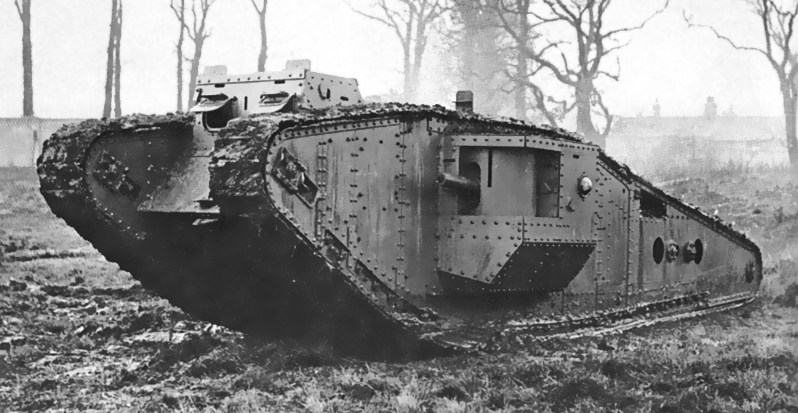
GarryB likes this post

magnumcromagnon- Posts : 8138
Points : 8273
Join date : 2013-12-05
Location : Pindos ave., Pindosville, Pindosylvania, Pindostan
- Post n°55
 Re: Israeli Ground Force
Re: Israeli Ground Force
lyle6 wrote:magnumcromagnon wrote:Israeli Merkava defeated/mobility killed by Israeli barbwire....absolutely embarrassing!!!




Yep, that'll keep the crew occupied for quite some time...
Armor and barbed wire, IDF.
https://twitter.com/gunner_schmulke/status/1355422906822619136
Fun fact: Since WW1 MBT's basic requirements are to be unhindered by minor obstacles like barbwire, there should be no excuse for this.
Not really something unique to the Merkava vehicle, despite its many flaws regarding its mobility characteristics. Any tracked vehicle with open sprockets could run the risk of getting stuck when fed enough barbed wire. The only real way to prevent this is to close off the sprockets from foreign material altogether:
*Struggles to find other relatively modern MBT's caught in barbwire*

kvs- Posts : 15857
Points : 15992
Join date : 2014-09-11
Location : Turdope's Kanada
- Post n°56
 Re: Israeli Ground Force
Re: Israeli Ground Force
I agree that there is S-class clown self-aggrandizement from the "west". But I can see how the wire can spool and build up.
The only way this would stop the tank is if the clearance between the wheels and the chassis was too small. If that is what
actually happened (as opposed to wire cleaning operation) then the Merkava has a rather serious design defect.
The only way this would stop the tank is if the clearance between the wheels and the chassis was too small. If that is what
actually happened (as opposed to wire cleaning operation) then the Merkava has a rather serious design defect.

magnumcromagnon- Posts : 8138
Points : 8273
Join date : 2013-12-05
Location : Pindos ave., Pindosville, Pindosylvania, Pindostan
- Post n°57
 Re: Israeli Ground Force
Re: Israeli Ground Force
kvs wrote:I agree that there is S-class clown self-aggrandizement from the "west". But I can see how the wire can spool and build up.
The only way this would stop the tank is if the clearance between the wheels and the chassis was too small. If that is what
actually happened (as opposed to wire cleaning operation) then the Merkava has a rather serious design defect.
The thing is that if you replace the barbwire with a combination of vines, mud, rocks, branches and other vegetation you would likely get the same effect for this MBT, and you realize the main design-defect is that Merkava has probably poor cross-country ability (designed only for urbanized areas) especially when you realize it weighs 70 tons. These barbwires were meant to impede men, not a 70 ton MBT with 1,500 HP turbo-charged diesel engine.

GarryB- Posts : 40537
Points : 41037
Join date : 2010-03-30
Location : New Zealand
- Post n°58
 Re: Israeli Ground Force
Re: Israeli Ground Force
I have experience with this.... what they need to do is stick a fork in it and then twist the fork round and round and round.
Doesn't matter how many noodles are on my plate that always gets them onto the fork every time....
Obviously my experience isn't with noodles.... that would be silly...
My experience is making candyfloss... (I think americans call it cotton candy).
Doesn't matter how many noodles are on my plate that always gets them onto the fork every time....
Obviously my experience isn't with noodles.... that would be silly...
My experience is making candyfloss... (I think americans call it cotton candy).

ahmedfire- Posts : 2366
Points : 2548
Join date : 2010-11-11
Location : The Land Of Pharaohs
- Post n°59
 Re: Israeli Ground Force
Re: Israeli Ground Force
Merkava hit another one by mistake
https://twitter.com/shailevy6/status/1362082167027871746
https://twitter.com/shailevy6/status/1362082167027871746

AJ-47- Posts : 205
Points : 222
Join date : 2011-10-05
Location : USA
In this article I wrote my view about upgrade the Armor Brigades of Israel.
Introduction:
"New trends in the development of combat vehicles in EUROPE, USA and ISRAEL".
In recent years, articles have been published in Europe that has presented a new approach to the structure of the Armored Corps. Germany and France take the lead in developing a new concept called: “Main Ground Combat System (MGCS)”.
This concept reduces the importance of the tank as an individual Combat Unit and increases the importance of combining number of different vehicles including the tank.
This thinking may have evolved after Russia introduced the new family of vehicles called “ARMATA”. At this point the Russians introduced the new tank called T-14 and the new IFV called T-15. Additional vehicles such as "BMPT", "PANTSIR" anti-aircraft vehicle, Self Propelled cannon called “Koalitsiya” and more will arrive along the way. They all will be part of the “ARMATA” family and they will all share the same chassis, although at different weights, the tank will weigh about 50 tons and the cannon will weigh about 65 tons.
The United States has also been working for many years on a replacement for the "Bradley" IFV, they come now with a new project that called: “Next Generation Combat Vehicle” (NGCV) and it’s also talking about a new structure that will have, in addition to tanks and IFVs, also remotely controlled vehicles and autonomous vehicles.
At the moment, another tender has been issued to replace the “Bradley” with 3 participants and we will see what happens.
Links to the European concept:
https://euro-sd.com/2020/08/articles/17893/research-and-technology-for-the-future-main-ground-combat-system/
https://www.isl.eu/documents/flyers/EN/isl_MGCS_EN_nm.pdf
Link to USA concept:
https://www.gao.gov/products/gao-20-579
In Israel too there are similar thoughts, and the project called "Carmel Demonstrate Technology” shows a lot of progress in capabilities.
Link to the concept of Israel: Rafael – “Carmel” https://www.youtube.com/watch?v=z3vU3hs5Dfo
I do not know the Carmel beyond the video we saw and it certainly shows an improvement in the operation of the tank. Along with the upgrades of the Merkava-4 called "Lightning", there is no doubt that the Merkava will remain at the top of the tanks in the world.
But is it possible that we are developing and building vehicles that are not needed?
The concept that Germany and France presents show a combination of several types of vehicles including tanks, in order to produce a team of vehicles that will be at the center of the Armored Force and not the single tank, I agree with this approach and later in the article I will present my views on this issue.
One of Israel's problems is that we do not have the time that needs to produce and put into service the upgrade of the Merkava tanks, the Namer and the Eitan APCs. We just reached a ceasefire with Hamas and we do not know if it will last and for how long.
In addition to these military problems, we have just recently been reminded that hatred of Jews and the desire to destroy the State of Israel still exists among Israeli Arabs.
It seems to me that another big war will be needed to restore Israeli control over all the areas of the country.
In light of all this and the possibility that we may enter into anther "Independence War”, from the outside and from the inside, the IDF needs to make some serious improvements not on future issues, but to strengthen the armored and infantry array of today, we need to acquire additional vehicles, upgrade the existing vehicles and get prepare to a different kind of war and this preparation should start now.
We will sooner or later have to take control the entire area south of the Beirut / Damascus road, west of the Damascus / Amman road to the border with Jordan and destroy the military power of the Hamas in the Gaza Strip. Most importantly, the Armor and the Infantry need to be prepared to fight one more big war and maybe it will be the last war.
In the following chapters I will write my opinion about the types of vehicles and upgrades that we need to make in the armored and infantry brigades that some of them will be new and some will be upgraded, with the emphasis being on the speed which we can make these changes.
An Armor Brigade will have the following elements:
1. Tanks.
2. Fighting vehicles.
3. Artillery.
4. Armored infantry.
5. Anti-aircraft vehicles.
The Brigade has additional forces such as: reconnaissance, combat engineering, supplies, intelligence and more, but they are not included in this article.
Chapter No-1 Upgrade the Merkava tank
Tanks are mainly suitable for fighting against enemy tanks, but we need to get them into serious upgrade, which allow them, in addition to fight against enemy armor, also to fight in built-up areas, to fight against infantry, against flying objects and more.
Below is my view on those upgrades:
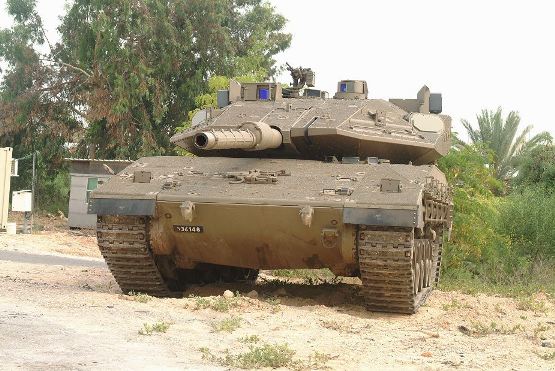
Pic No-1 Merkava-4M
1. 40mm cannon.
The first change that I would do is to remove the 7.62 mm coaxial machine gun and replace it with a 30/40mm gun. This gun called XM-813 (See pic. No.-2) is a 30mm gun that by replacing the barrel and 5 additional parts can fire 40mm shells.
The 40mm gun will give the gunner additional firing options and reduce some of the load on the 120mm cannon. Most targets from IFV level and below can be hit by this gun.
In addition, the tank capabilities in urban fighting will be improved. Heavy targets such as tanks, heavy IFV and other hard targets will be handling by the 120mm gun and the anti-tank missiles.

Pic No-2 XM-813 30/40 mm gun
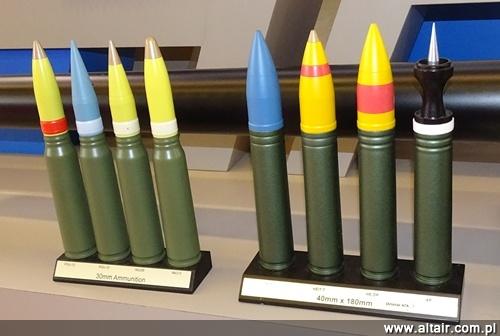
Pic No-3 On the left 30mm shells and on the right 40mm shells that is upgrade from the 30mm
In my opinion the turret is the main source of fire of the tank against enemy armor and other hard targets, the addition of a 40mm cannon would suit this thinking. The tank isn’t intended to fight against infantry and therefore there is no reason to install a 7.62mm MG as coaxial to the main gun. MGs are needed to protect the tank from infantry and therefore suitable MGs will be installed on the tank, but not as coaxial to the main gun.
1.2. "Modular Combat Unit" (MCU) and small turrets.
The second change that I will do is in the structure of the Merkava turret. I will remove the “basket” at the end of the turret and replace it with an add-on piece that I call it: “Modular Combat Unit" (MCU)
The MCU will fit the back of the Merkava turret and actually lengthen it; the width of the Unit will be longer than the width of the turret, so the edges of the Unit will protrude outside of the Merkava turret like big "ear" on each side of the turret.
Picture No. 4 below shows the Chinese tank model 96 that the back side of the turret has double space armor which make it slightly wider than the front of the turret, this part looks like the "ear" that I mention above It's not perfect but it will give some idea about the "ear".

Pic No-4 The Chinese tank type 96
1.3. Weapon post, Mini Turret and Guns.
A. Weapon Post:
Inside each of the "ears" we will install a "weapon post", inside the "ear" we will hold the ammo for the gun that we will mount on top of the "ear". The gun will be the 20mm Gatling gun M-197 with 3 barrels, and 2 rate of fire: low 750 round per minute and high of 1,500 round per minute. (pic No-5)
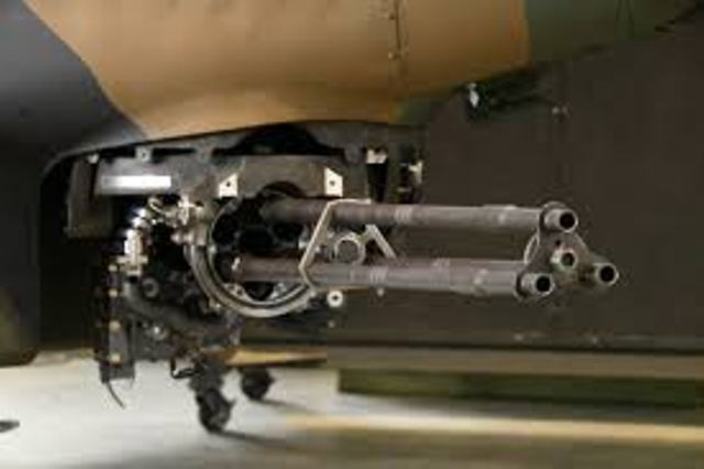
Pic No-5 M-197 20mm gun
As the "ears" protrude outside the turret, the gun can fire straight ahead and also tilt 180 degrees right or left depending on the location of the gun. The two guns will cover 360 degrees around the tank and up to 2,000 meters from the tank.
In the center of the MCU, we will install another turret with 30mm gun; one of the option is the M-230LF, which is the land version of the 30mm gun of the Apache helicopter, (Pic. No.-6) the gun has a firing rate of 200 shells per minute and effective range of 2,000 meters, It has a wide range of shells, including air-burst shells that will be very effective against drones and other flying objects that may appear above our forces. As coaxial MG I will use the new MG in caliber of “0.338. (Pic.No-7)
There is anther option to replace the MG with a Gatling gun with the same caliber, but with fire rate of 2,500 rounds per minute.
In addition, on one side of the turret I will install a “pod” that contains 4 or 6 Rafael anti-tank missiles with range of 10 or 5.5 km depend on the missile type. The ammunition for the 30mm, the 20mm guns and the MG will be hold inside the “Modular Combat Unit”-MCU.
The 2 turrets on the MCU with the 20mm guns will be operated by “Artificial Intelligence” (AI). The AI will have the right sensors to search, find and destroy any place that will threat or open fire on the tank. The AI will use all the turrets on the MCU.

Pic No-6 The M-230LF 30mm gun

Pic No-7 MG in "0.338 caliber
Below are a few lines about the new machine gun:
The LWMMG is designed to fill the gap between 7.62 mm and .50 HMG machine guns. The weapon uses the .338 Norma Magnum round, giving it greater lethality and double the range of the 7.62 NATO round. The LWMMG has a rate of fire of 500 rounds per minute, an effective range of 1,700 meters and a maximum range of 5,600 meters. It weighs 10.8 kg, making it only slightly heavier than the M240L, and 1.4 kg lighter than the M240B.
The .338NM bullet has over 6,300 J (4,600 ft/lb) of muzzle energy and is four times more powerful than the 7.62 NATO at 1,000 meters. An individual round is twice as heavy (45.5 grams compared to 24 grams), as are each belt link (8 grams compared to 4 grams).
For each weapon to fire for one minute, the standard LWMMG weighing 10.8 kg (24 lb) plus a belt of 500 .338NM rounds would weigh 37.6 kg (83 lb), while an M240B weighting 12.5 kg (28 lb) plus a belt of 800 7.62 NATO rounds would weigh 34.9 kg (77 lb).
https://en.wikipedia.org/wiki/Lightweight_Medium_Machine_Gun
Chapter No-3 Fighting vehicles and APCs in the Israeli Infantry Brigade
3.1 Fighting Vehicles-FV in the Infantry Brigade.
The FVs in the Infantry Brigades will be the same as the FVs in the Armored Brigade therefore I’ll not add anything in this chapter. You can read about these vehicles in Chapter #1-2 in this article.
3.2 APCs in the infantry Regiment.
There are 3 types of APCs in the Israeli infantry brigades
1. M-113.
2. Namer.
3. Eitan.
1. The M-113 is not an APC, the right term for it is "taxi" that takes people from "A" to "B".
It can have many uses but they must not get closer than 10 km from the border and certainly not to enter conflict zones. In order to change this situation the Namer was built.
2. The Namer is built on the chassis of the Merkava; it weighs 60 tons and is considered the most protected APC in the world (Photo No’-1). In the photo we can see it with a turret carrying 2 ATGMs, a 30 mm cannon, a coaxial machine gun and the anti ATGM interceptor “Windbreaker”.
This is a large turret that is suitable for a Fighting Vehicle and not an APC, so I would replace this turret with another turret called "Kliver" (Photo No’-2). I wrote about this turret, the MCU system and its weapons in Chapter 2 Sections no’. 2.2 & 2.3.
In addition, on each side of the "Kliver" turret, I will install a pod that carries thermobaric rockets called "Shmel-M". (Photo No’-3 and 4) This rocket has an effective range of 600 meters, maximum range of 1,700 meters, diameter of 90mm, length of 900mm and weight
of 8.8 kg. The strength of the warhead is equivalent to the explosive of 155mm shell.
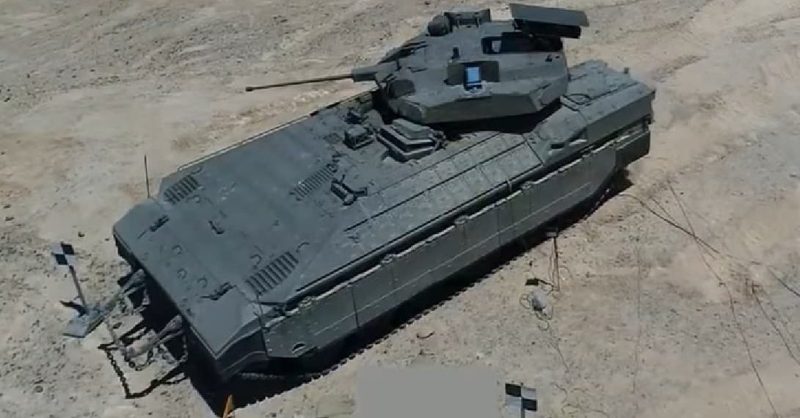
Pic No'-1 The Namer with unmanned turret.
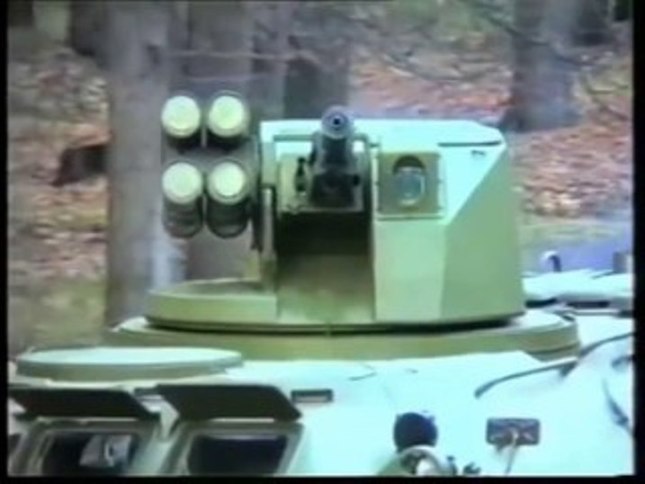
Pic No'-2 The "kliver" Turret

Pic No'-3 Thermobaric Rocket called "Shmel-M"

Pic No'-4 Launcher for 23 70mm rockets
This launcher can hold 12 or 18 rockets type Shmel-M on each side of the turret.
3. The Eitan (photo no’-5) will be the APC for the Infantry Regiment especially for the reserve; his great advantage is in its mobility, it can leave his place and move to the border or anywhere it needs to be, regardless of carriers that may or may not arrive.
I would replace his turret, as we see in the photo below, with the same turret as we would install on the Namer, so the Eitan and the Namer would have the same turret, the same weapons and the same electronic systems.
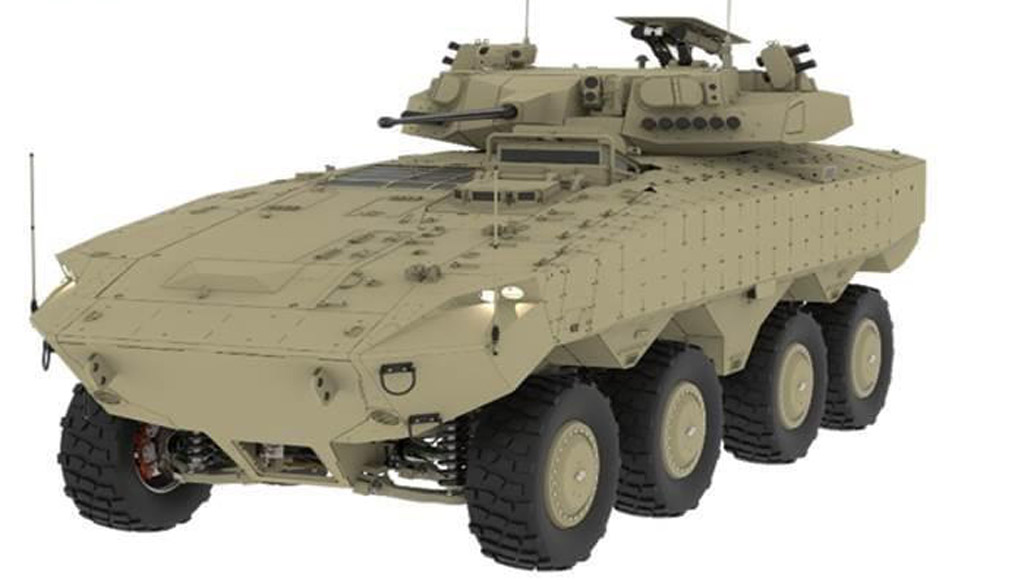
Pic No'-5 The Eitan IFV/APC
Our problem is that we do not have enough APCs for our Armor and Infantry Brigades and we do not have the time to wait until we get all the Namers and the Eitans, and without enough APCs the IDF can’t use the maximum power of his Armored and Infantry forces.
The solution to this problem is twofold:
A. Purchase suitable APCs from other countries.
B. Increase production of the Namers and the Eitans by collaborating with other production countries such as the United States and Russia.
I think that we manufacture some of the Namers and now it’s the right time to check if we need more tanks or maybe stop building tanks and build more Namers and Eitans.
In the United States, there is a wheeled vehicle called “striker”, but the IDF did not purchase it and it has is reasons with it.
In China there is an IFV called VN-17. (Photo no’-6) It’s weighing 30 tons and it looks good but it’s an IFV and we need APCs, so I would take out the turret and replace it with the “Kliver” turret like we have on the Namer and the Eitan.
In Russia there is the BTR-80 and when the new "Boomerang" and "Kurganets" APCs enter it may be possible to get these BTRs quickly and cheaply. (Picture No. 7)
If we will get the BTR-80 we will have to make some changes to install all the weapon system and the Anti ATGM system like on the Namers and the Eitans.
Another option is to purchase or even better to manufacture together with Russia the vehicle called "Typhoon-K" (Photo No. . This is a large and heavy 21-ton APC that can carry 16 dismount soldiers and 2 crew members. It has 6 openings on the roof for fighters and/or weapons systems. We also can use it to carry remote control UCGV like the Uran,
. This is a large and heavy 21-ton APC that can carry 16 dismount soldiers and 2 crew members. It has 6 openings on the roof for fighters and/or weapons systems. We also can use it to carry remote control UCGV like the Uran,
Nerekhta and others.
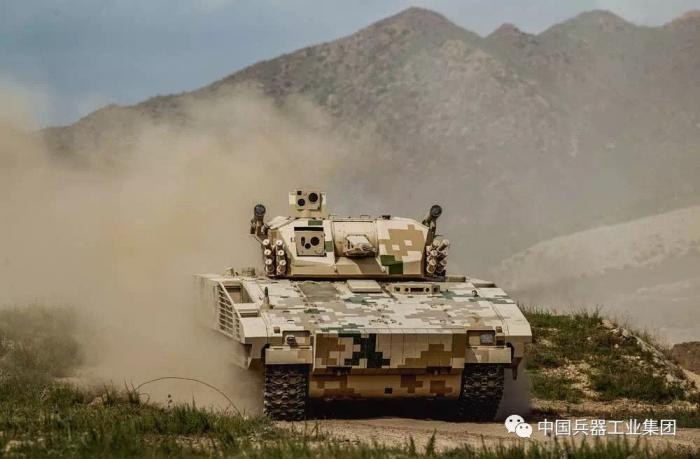
Pic No'-6 VN-17 Chinese IFV

Pic No'-7 BTR-82
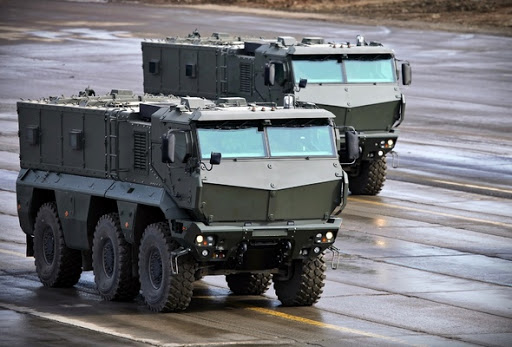
Pic No'-8 The Kamaz K63968
I would buy ASAP 1,000 BTR-80/82 and start rebuilt the Armored Infantry that we give up on them many years ago. In the mean time I would start working on the way to manufacturing the Kamaz-63968 as we see it in pic no’-8.
Chapter No’-5 Artillery
The Artillery Brigade should and can be the most important factor in the Armored Brigade and it can completely change our combat capabilities. The Brigade's Artillery array should be based on 81mm and 120mm mortars, multi rockets launchers system, missiles and loitering armament.
Below is my view on the artillery formation for the IDF and its placement at the various levels:
1. 81 mm mortars- in the Company.
2. 120 mm mortars- in the Battalion.
3. 122 mm "Grad" - in the Battalion.
4. 122 mm "Accular" - in the Brigade.
5. 160 mm "Accular" - in the Brigade.
6. 227 mm “MLRS M-270” - in the Brigade.
At the Division level there will be additional artillery arrays such as: 220mm "TOS-2" thermobaric rockets for a range of 10 km, "Extra" rockets for a range of 150 km, "Predator Hawk" missiles for a range of 300 km, "Laura" missiles for a range of 400 km, Jumper Missiles for a range of 50 km and 227 mm hybrid rockets with SDB air to ground bomb for 150 km.
5.1 Company-level artillery.
The role of the Company and its Artillery is first and foremost to defend the territory it holds and not allow the enemy to cross it.
The company-level artillery will include: 6x 81mm mortars and gliders for patrol and locating enemy forces.
5.1.1 81/82 mm mortars
We need to buy the Russia mortar system called "2S41 Druck" 82 mm that installed on 4x4 wheeled vehicle called "Typhoon K-4338" manufacture by the Russian Company "Kamaz". (Pic No’-1) I think we can ask Russia to change the barrel to 81mm.
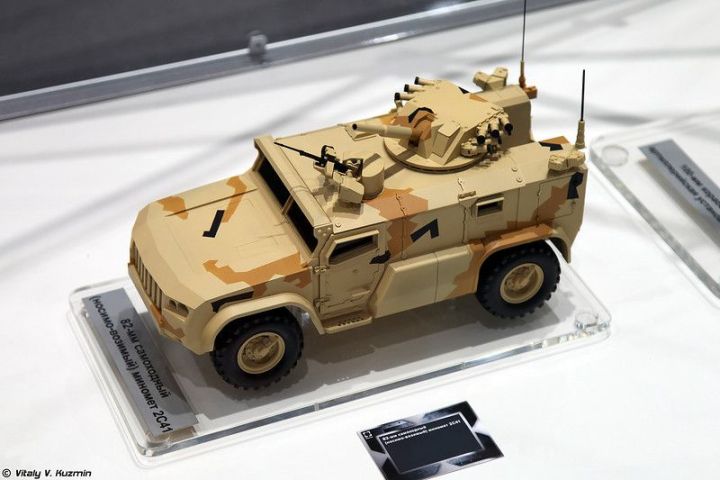
Pic No'-1 The Druck 82mm mortar
The range of the mortar is 6 km, rate of fire is 15 shells per minute, the mortar is breach loading, the vehicle carries 40 shells, it is operated by 4 crew members, the vehicle has operating range of 1,200km, weighs 14tons, has 350hp diesel engine and carries a RCWS with 7.62mm MG. We maybe just need to buy the turret and install it on the M-113 that we have many of them.
United States is developing a smart 81mm mortar shells that in there tests it made 10km and the long run goal is to get it up to 40km. The shell is guided to a laser spot so even small HE warhead can do big damage and can be very effective.
Incorporating drones into the mortar array will enable long-range target detection, identification and the drone can send GPS info to the command post that will send this info to artillery units that will try to destroy the target.
If the Army will get this new 81mm laser guide shells, it will be a great upgrade for the 81mm and probably will follow by the 120mm mortar.
Below is a picture of the smart 81mm shell.

Pic No'-2 Smart 81mm mortar shell
5.2 Artillery for the Battalion.
The main function of the battalion and its artillery is to defend his sector and prevent enemy forces from crossing the line. Its additional function is to help the armored forces to destroy the enemy arrays in its sector.
The battalion artillery will include: 6 MLRS BM-21 "Grad", 6x120mm mortars and drones to patrol and locating the enemy targets. Just for clarification the battalion artillery is in addition to the company artillery.
5.2.1 122 mm "Grad"
The IDF needs to put first order to purchase about 500 BM-21 MLRS and thousands of 122mm unguided rockets to equip the MLRS units in the Armor Battalions. In Russia they are starting to replace the BM-21 MLRS with a new MLRS called Tornado-G and I guess we will be able to purchase the BM-21 MLRS at a relatively cheap price with short delivery time. The MLRS is installed on a 6x6 wheeled truck, it carries 40 launchers, has a range of 20km, rate of fire 40 rockets in 20 seconds and warhead weighing 20kg. (Pic No’.-3)
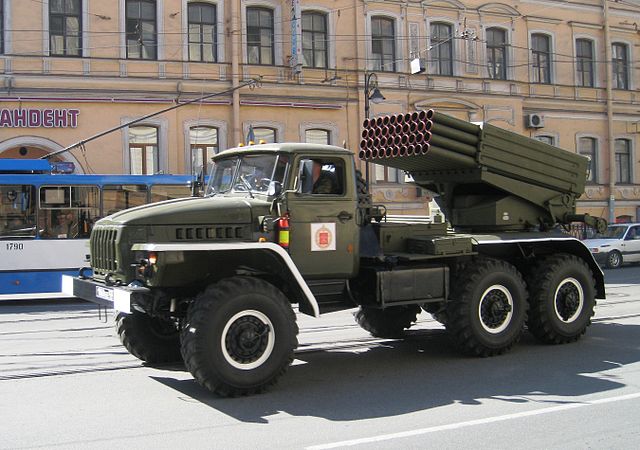
Pic no'-3 BM-21 "Grad"
5.2.2 Mortar 120mm
We would install the 120 mm mortar in a rotating turret, such as the mortar called "Amos" that has 2 barrels of 120mm or with one barrel only as seen on the mortar “Nemo”. (Pic No’.-4)
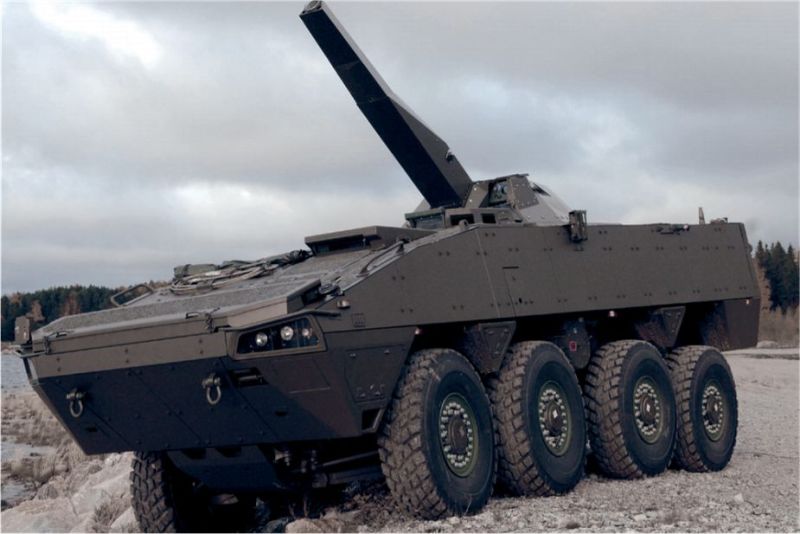
Pic no'-4 the Mortar "Namo"
The two mortars use the same barrel, the same shells, and the same loading system.
The only difference between them is the number of barrels and the rate of fire. United States is checking these mortars and we will see what’s happened.
The barrel length of the mortar is 3.00 meters; the range with standard shells is 10km and 15km with smart shell. One type of smart shells are manufactured in the Aerospace Industry of Israel called "Fireball". The "Amos" mortar has a firing rate of 24 shells per minute, and the "Nemo" mortar has a firing rate of 12 shells per minute.
5.3 Artillery for the Brigade Level.
The brigade artillery differs in its requirements and structure from the company and battalion artillery. The brigade don’t have there own artillery and it will get artillery from the Division level. The types of artillery it will receive will be adapted to the sector in which it will be located. The main role of artillery at the brigade level is to strike and destroy the rocket arrays of Hamas and Hezbollah. The way to do this is by the air force and with an array of guided rockets and missiles. This array will include the "Accular-160", the "Accular-122" the M-270 and, if necessary, the Russian BM-30 "Smarch". The Brigade artillery will be enforced by the Division and get more Rocket/missiles launchers like: "Extra" rocket launchers, “Jumper” and "Predator Hawk" missiles, loitering armament and hybrid missiles.
5.3.1 "Accular-160" and "Accolar-122”.
In the late 1970s, IMI developed the rocket called "Lar-160" which is mounted in pairs on a Mercedes truck. Each truck hold 2 pods with 10 or 13 160mm rockets, The rocket has a range of 45 km, it’s 3.4 meters long, weighs 110 kg and carries a 40 kg warhead.
IMI upgraded the Lar-160 by adding an INS and GPS system to the rocket and installed a kit in the rocket that gives the rocket the ability to fix its trajectory after launch and brings it to an accuracy equal to cannon fire. The rocket has a cumulative circular error of 10 meters and this means that 50% of the rockets will hit at a distance not exceeding 10 meters from the target. The upgraded rocket was named "Accular-160".
In addition to the 160mm rockets, IMI also upgraded the Russian 122mm rockets by increasing the range from 20km to 35km, adding INS and GPS and installed a trajectory installation system in it. After the improvements, the accuracy of these rockets reaches 10 meters CEP. This rocket that called "Accular-122" was bought by the IDF and received the name "Spear".
5.3.2 Rafael and the guide system EPIK
In addition to IMI, Rafael also upgraded the 122 mm rockets by installing a guidance kit on the nose of the rocket. Rafael has published details about its guidance system called "Epik".
EPIK-(Electro-Optical Precision Integration Kit)
"Epik" is a precise aiming kit that upgrades the old rockets and gives them great accuracy, (3 meters CEP) (Pic. No’-5) the unit has capabilities of autonomous, long-range with the aiming kit from the Air-to-Ground bombs called “Spice".
The kit is manufactured by Rafael and is already completed the development of the system and it’s ready for use on 160mm and 122mm rockets.
In addition to the 160mm rockets, the EPIK system can be installed on any rocket of any diameter and weight.
The system includes an uncooled infrared sensor, a laser sensor for hitting moving targets and it has a navigation system driving by INS and GPS. The "Spice" system has CEP of 3 meters and the "Epik" system have similar results.
This is what was written about the system in Israel Defense: “The growing need for precision-guided munitions for ground forces and the desire to provide accurate, independent firepower to maneuvering forces are leading the Israeli industries to develop precision guidance kits for rockets”. In the past two weeks, both Rafael and IAI have introduced such kits.
Link for the article:
https://www.israeldefense.co.il/en/node/34305

Pic No'-5 The Epik Rocket
5.3.3 MLRS M-270
The M-270 is mounted on a Bradley chassis that has been adapted to carry 2 pods.
(Pic No’-5) Each pod has 6x227mm rockets or one Atacms missile. In addition, there is a wheeled track name Himars that carry one pod that carry 227mm rockets or the missile Atacms.

Pic No'-5 M-270 launch the Atacms missile
The function of the 227mm rockets and the Atacms missiles is to destroy fortified targets, underground tunnels and any target that requires precise hit and a heavy warhead. The 227mm rockets carry several types of warheads such as: cluster bomb, uniform bomb weighing up to 90kg. Another model of the rocket carries a laser sensor that gives the rocket 1-meter CEP and the ability to hit moving target.
The Atacms warhead weighs 230kg and has a range of 300km (Pic No’-5).
Is replacement in the US Army planned to reach 800 km.
5.3.4 BM-30 Smerch

Pic No-6 The MLRS B-30 Smerch
The BM-30 Smerch (Russian: Смерч, "tornado", "whirlwind"), 9K58 Smerch or 9A52-2 Smerch-M is a Soviet heavy multiple rocket launcher. The system is intended to defeat personnel, armored, and soft targets in concentration areas, artillery batteries, command posts and ammunition depots. It was designed in the early 1980s and entered service in the Soviet Army in 1989.[2] When first observed by the West in 1983, it received the code MRL 280mm M1983. It continued in use by Russia;
There is a program to replace it by the 9A52-4 Tornado that was launched in 2018. (Pic No’-7)
The rocket has max range of 70 km, it has several types of warheads that weight 250 kg, the overall weight is 800 kg.
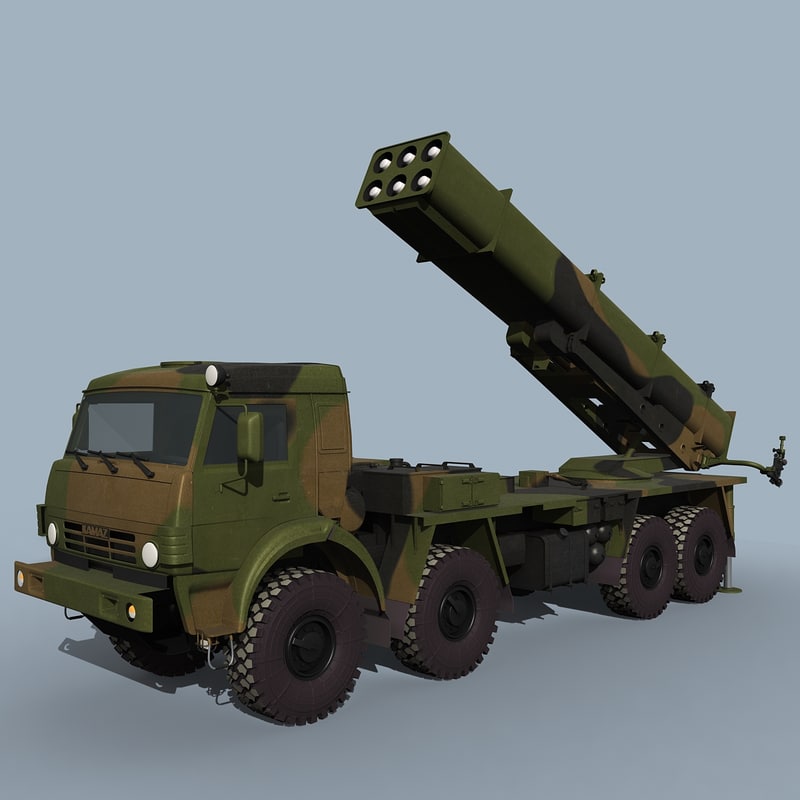
(Pic No’-7) The new BM-30 that his name is 9A52-4
5.3.5 Loitering ammo.
The possibility of hitting any target with a CEP of 10 meters or less and the ability of the "Spice" bombs and other air force missiles are huge change in the IDF's ability to destroy 150,000 Hezbollah and Hamas rockets and win the war before it starts.
The basis for all this is the ability to search and find all the rocket or missile launchers in Lebanon and the Gaza Strip. To the search array we have to add a system that will find and destroy all the rockets that were not destroyed in the first strike. We have to add the loitering armament that will search and find the rest of the rockets and destroy them.
The loitering armament is a Search, Find and Destroy system to ensure that the rockets array of the enemies will be destroyed. Below is a picture of an unmanned vehicle equipped with loitering armament and has several options of armaments such as: "Hiro-120", "Hiro-400" and more.

Pic No'-8 Loitering Ammo
5.4. Brigade artillery along the borders.
5.4.1 Brigade artillery on the border with Gaza.
Israel needs to purchase 100 mortars 240mm in diameter from Russia, Pic No'-9
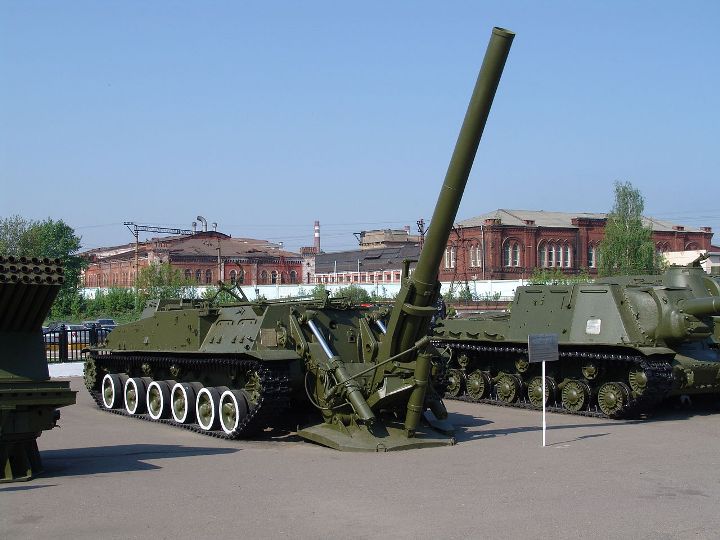
Pic. No’-9 2S4-Tyulpan 240mm Mortar
This mortar has a range of 20km and a warhead of 130kg. These mortars will belong to the Gaza Division and will not be part of any brigade artillery formation.
I would install the mortars in ten shielded areas along the Gaza Strip, 10km from the Gaza Strip border, to keep them outside the range of Hamas mortars.
I would defend them with 30mm cannons with air-burst shells against rockets and mortar’s shells, with "Iron Dome" systems and 57mm cannons against rockets and skimmers.
The 240mm mortar shells will hit any target above the ground in the Gaza Strip.
Most importantly, any point that rockets or shells will fired on Israel, will get immediately and automatically response from our mortars the 120mm and the 240mm mortars before or immediately after the rockets fire. After few dozen shells that will hit Gaza the urge to fire against us once again will disappear.
Brigade artillery in the Gaza Strip will include 160mm and 122mm Accular rockets that, along with the 240mm mortars, will destroy Hamas rocket arrays. This entire bridge formation is in addition to the company and battalions artillery in the brigade.
Against targets that dug deep into the ground, we will activate the M-270 MRLS carrying the Atacms missiles. This missile is 4.0 meters long, 610mm in diameter and carries a 230kg warhead and has a 300km range. (Pic No’-5) I'll be more happy with 30km range and 500kg warhead.
The same Artillery should be with the border with Lebanon but much stronger as Hezbollah is much stronger than Hamas.
Chapter No'-6 Formation
Armor Brigade 1+4
Armor platoon consists of 1 tank and 4-FVs. Total 5 vehicles
Armor Company consists of 5 platoons with 5 tanks and 20 FVs Total of 25 vehicles.
Armor Battalion consists of 5 companies with 25 tanks and 100 FVs Total 125 vehicles.
Armor Brigade consists of 2 battalions with 50 tanks, 200 FVs, 30 APC and 50 FVs for Infantry. Total 330 Vehicles.
If we will have our Armor like I describe, we will have 24 Brigades in duty and reserved, with 1,200 tanks, 4,800 FVs and we will have 24 Artillery Brigade, 24 armor infantry Battalions and 24 Brigade Headquarters.
This article come to an end and I want to thank every body that help me here and want I to wish everybody happy weekend.
Introduction:
"New trends in the development of combat vehicles in EUROPE, USA and ISRAEL".
In recent years, articles have been published in Europe that has presented a new approach to the structure of the Armored Corps. Germany and France take the lead in developing a new concept called: “Main Ground Combat System (MGCS)”.
This concept reduces the importance of the tank as an individual Combat Unit and increases the importance of combining number of different vehicles including the tank.
This thinking may have evolved after Russia introduced the new family of vehicles called “ARMATA”. At this point the Russians introduced the new tank called T-14 and the new IFV called T-15. Additional vehicles such as "BMPT", "PANTSIR" anti-aircraft vehicle, Self Propelled cannon called “Koalitsiya” and more will arrive along the way. They all will be part of the “ARMATA” family and they will all share the same chassis, although at different weights, the tank will weigh about 50 tons and the cannon will weigh about 65 tons.
The United States has also been working for many years on a replacement for the "Bradley" IFV, they come now with a new project that called: “Next Generation Combat Vehicle” (NGCV) and it’s also talking about a new structure that will have, in addition to tanks and IFVs, also remotely controlled vehicles and autonomous vehicles.
At the moment, another tender has been issued to replace the “Bradley” with 3 participants and we will see what happens.
Links to the European concept:
https://euro-sd.com/2020/08/articles/17893/research-and-technology-for-the-future-main-ground-combat-system/
https://www.isl.eu/documents/flyers/EN/isl_MGCS_EN_nm.pdf
Link to USA concept:
https://www.gao.gov/products/gao-20-579
In Israel too there are similar thoughts, and the project called "Carmel Demonstrate Technology” shows a lot of progress in capabilities.
Link to the concept of Israel: Rafael – “Carmel” https://www.youtube.com/watch?v=z3vU3hs5Dfo
I do not know the Carmel beyond the video we saw and it certainly shows an improvement in the operation of the tank. Along with the upgrades of the Merkava-4 called "Lightning", there is no doubt that the Merkava will remain at the top of the tanks in the world.
But is it possible that we are developing and building vehicles that are not needed?
The concept that Germany and France presents show a combination of several types of vehicles including tanks, in order to produce a team of vehicles that will be at the center of the Armored Force and not the single tank, I agree with this approach and later in the article I will present my views on this issue.
One of Israel's problems is that we do not have the time that needs to produce and put into service the upgrade of the Merkava tanks, the Namer and the Eitan APCs. We just reached a ceasefire with Hamas and we do not know if it will last and for how long.
In addition to these military problems, we have just recently been reminded that hatred of Jews and the desire to destroy the State of Israel still exists among Israeli Arabs.
It seems to me that another big war will be needed to restore Israeli control over all the areas of the country.
In light of all this and the possibility that we may enter into anther "Independence War”, from the outside and from the inside, the IDF needs to make some serious improvements not on future issues, but to strengthen the armored and infantry array of today, we need to acquire additional vehicles, upgrade the existing vehicles and get prepare to a different kind of war and this preparation should start now.
We will sooner or later have to take control the entire area south of the Beirut / Damascus road, west of the Damascus / Amman road to the border with Jordan and destroy the military power of the Hamas in the Gaza Strip. Most importantly, the Armor and the Infantry need to be prepared to fight one more big war and maybe it will be the last war.
In the following chapters I will write my opinion about the types of vehicles and upgrades that we need to make in the armored and infantry brigades that some of them will be new and some will be upgraded, with the emphasis being on the speed which we can make these changes.
An Armor Brigade will have the following elements:
1. Tanks.
2. Fighting vehicles.
3. Artillery.
4. Armored infantry.
5. Anti-aircraft vehicles.
The Brigade has additional forces such as: reconnaissance, combat engineering, supplies, intelligence and more, but they are not included in this article.
Chapter No-1 Upgrade the Merkava tank
Tanks are mainly suitable for fighting against enemy tanks, but we need to get them into serious upgrade, which allow them, in addition to fight against enemy armor, also to fight in built-up areas, to fight against infantry, against flying objects and more.
Below is my view on those upgrades:

Pic No-1 Merkava-4M
1. 40mm cannon.
The first change that I would do is to remove the 7.62 mm coaxial machine gun and replace it with a 30/40mm gun. This gun called XM-813 (See pic. No.-2) is a 30mm gun that by replacing the barrel and 5 additional parts can fire 40mm shells.
The 40mm gun will give the gunner additional firing options and reduce some of the load on the 120mm cannon. Most targets from IFV level and below can be hit by this gun.
In addition, the tank capabilities in urban fighting will be improved. Heavy targets such as tanks, heavy IFV and other hard targets will be handling by the 120mm gun and the anti-tank missiles.

Pic No-2 XM-813 30/40 mm gun

Pic No-3 On the left 30mm shells and on the right 40mm shells that is upgrade from the 30mm
In my opinion the turret is the main source of fire of the tank against enemy armor and other hard targets, the addition of a 40mm cannon would suit this thinking. The tank isn’t intended to fight against infantry and therefore there is no reason to install a 7.62mm MG as coaxial to the main gun. MGs are needed to protect the tank from infantry and therefore suitable MGs will be installed on the tank, but not as coaxial to the main gun.
1.2. "Modular Combat Unit" (MCU) and small turrets.
The second change that I will do is in the structure of the Merkava turret. I will remove the “basket” at the end of the turret and replace it with an add-on piece that I call it: “Modular Combat Unit" (MCU)
The MCU will fit the back of the Merkava turret and actually lengthen it; the width of the Unit will be longer than the width of the turret, so the edges of the Unit will protrude outside of the Merkava turret like big "ear" on each side of the turret.
Picture No. 4 below shows the Chinese tank model 96 that the back side of the turret has double space armor which make it slightly wider than the front of the turret, this part looks like the "ear" that I mention above It's not perfect but it will give some idea about the "ear".

Pic No-4 The Chinese tank type 96
1.3. Weapon post, Mini Turret and Guns.
A. Weapon Post:
Inside each of the "ears" we will install a "weapon post", inside the "ear" we will hold the ammo for the gun that we will mount on top of the "ear". The gun will be the 20mm Gatling gun M-197 with 3 barrels, and 2 rate of fire: low 750 round per minute and high of 1,500 round per minute. (pic No-5)

Pic No-5 M-197 20mm gun
As the "ears" protrude outside the turret, the gun can fire straight ahead and also tilt 180 degrees right or left depending on the location of the gun. The two guns will cover 360 degrees around the tank and up to 2,000 meters from the tank.
In the center of the MCU, we will install another turret with 30mm gun; one of the option is the M-230LF, which is the land version of the 30mm gun of the Apache helicopter, (Pic. No.-6) the gun has a firing rate of 200 shells per minute and effective range of 2,000 meters, It has a wide range of shells, including air-burst shells that will be very effective against drones and other flying objects that may appear above our forces. As coaxial MG I will use the new MG in caliber of “0.338. (Pic.No-7)
There is anther option to replace the MG with a Gatling gun with the same caliber, but with fire rate of 2,500 rounds per minute.
In addition, on one side of the turret I will install a “pod” that contains 4 or 6 Rafael anti-tank missiles with range of 10 or 5.5 km depend on the missile type. The ammunition for the 30mm, the 20mm guns and the MG will be hold inside the “Modular Combat Unit”-MCU.
The 2 turrets on the MCU with the 20mm guns will be operated by “Artificial Intelligence” (AI). The AI will have the right sensors to search, find and destroy any place that will threat or open fire on the tank. The AI will use all the turrets on the MCU.

Pic No-6 The M-230LF 30mm gun

Pic No-7 MG in "0.338 caliber
Below are a few lines about the new machine gun:
The LWMMG is designed to fill the gap between 7.62 mm and .50 HMG machine guns. The weapon uses the .338 Norma Magnum round, giving it greater lethality and double the range of the 7.62 NATO round. The LWMMG has a rate of fire of 500 rounds per minute, an effective range of 1,700 meters and a maximum range of 5,600 meters. It weighs 10.8 kg, making it only slightly heavier than the M240L, and 1.4 kg lighter than the M240B.
The .338NM bullet has over 6,300 J (4,600 ft/lb) of muzzle energy and is four times more powerful than the 7.62 NATO at 1,000 meters. An individual round is twice as heavy (45.5 grams compared to 24 grams), as are each belt link (8 grams compared to 4 grams).
For each weapon to fire for one minute, the standard LWMMG weighing 10.8 kg (24 lb) plus a belt of 500 .338NM rounds would weigh 37.6 kg (83 lb), while an M240B weighting 12.5 kg (28 lb) plus a belt of 800 7.62 NATO rounds would weigh 34.9 kg (77 lb).
https://en.wikipedia.org/wiki/Lightweight_Medium_Machine_Gun
Chapter No-3 Fighting vehicles and APCs in the Israeli Infantry Brigade
3.1 Fighting Vehicles-FV in the Infantry Brigade.
The FVs in the Infantry Brigades will be the same as the FVs in the Armored Brigade therefore I’ll not add anything in this chapter. You can read about these vehicles in Chapter #1-2 in this article.
3.2 APCs in the infantry Regiment.
There are 3 types of APCs in the Israeli infantry brigades
1. M-113.
2. Namer.
3. Eitan.
1. The M-113 is not an APC, the right term for it is "taxi" that takes people from "A" to "B".
It can have many uses but they must not get closer than 10 km from the border and certainly not to enter conflict zones. In order to change this situation the Namer was built.
2. The Namer is built on the chassis of the Merkava; it weighs 60 tons and is considered the most protected APC in the world (Photo No’-1). In the photo we can see it with a turret carrying 2 ATGMs, a 30 mm cannon, a coaxial machine gun and the anti ATGM interceptor “Windbreaker”.
This is a large turret that is suitable for a Fighting Vehicle and not an APC, so I would replace this turret with another turret called "Kliver" (Photo No’-2). I wrote about this turret, the MCU system and its weapons in Chapter 2 Sections no’. 2.2 & 2.3.
In addition, on each side of the "Kliver" turret, I will install a pod that carries thermobaric rockets called "Shmel-M". (Photo No’-3 and 4) This rocket has an effective range of 600 meters, maximum range of 1,700 meters, diameter of 90mm, length of 900mm and weight
of 8.8 kg. The strength of the warhead is equivalent to the explosive of 155mm shell.

Pic No'-1 The Namer with unmanned turret.

Pic No'-2 The "kliver" Turret

Pic No'-3 Thermobaric Rocket called "Shmel-M"

Pic No'-4 Launcher for 23 70mm rockets
This launcher can hold 12 or 18 rockets type Shmel-M on each side of the turret.
3. The Eitan (photo no’-5) will be the APC for the Infantry Regiment especially for the reserve; his great advantage is in its mobility, it can leave his place and move to the border or anywhere it needs to be, regardless of carriers that may or may not arrive.
I would replace his turret, as we see in the photo below, with the same turret as we would install on the Namer, so the Eitan and the Namer would have the same turret, the same weapons and the same electronic systems.

Pic No'-5 The Eitan IFV/APC
Our problem is that we do not have enough APCs for our Armor and Infantry Brigades and we do not have the time to wait until we get all the Namers and the Eitans, and without enough APCs the IDF can’t use the maximum power of his Armored and Infantry forces.
The solution to this problem is twofold:
A. Purchase suitable APCs from other countries.
B. Increase production of the Namers and the Eitans by collaborating with other production countries such as the United States and Russia.
I think that we manufacture some of the Namers and now it’s the right time to check if we need more tanks or maybe stop building tanks and build more Namers and Eitans.
In the United States, there is a wheeled vehicle called “striker”, but the IDF did not purchase it and it has is reasons with it.
In China there is an IFV called VN-17. (Photo no’-6) It’s weighing 30 tons and it looks good but it’s an IFV and we need APCs, so I would take out the turret and replace it with the “Kliver” turret like we have on the Namer and the Eitan.
In Russia there is the BTR-80 and when the new "Boomerang" and "Kurganets" APCs enter it may be possible to get these BTRs quickly and cheaply. (Picture No. 7)
If we will get the BTR-80 we will have to make some changes to install all the weapon system and the Anti ATGM system like on the Namers and the Eitans.
Another option is to purchase or even better to manufacture together with Russia the vehicle called "Typhoon-K" (Photo No.
Nerekhta and others.

Pic No'-6 VN-17 Chinese IFV

Pic No'-7 BTR-82

Pic No'-8 The Kamaz K63968
I would buy ASAP 1,000 BTR-80/82 and start rebuilt the Armored Infantry that we give up on them many years ago. In the mean time I would start working on the way to manufacturing the Kamaz-63968 as we see it in pic no’-8.
Chapter No’-5 Artillery
The Artillery Brigade should and can be the most important factor in the Armored Brigade and it can completely change our combat capabilities. The Brigade's Artillery array should be based on 81mm and 120mm mortars, multi rockets launchers system, missiles and loitering armament.
Below is my view on the artillery formation for the IDF and its placement at the various levels:
1. 81 mm mortars- in the Company.
2. 120 mm mortars- in the Battalion.
3. 122 mm "Grad" - in the Battalion.
4. 122 mm "Accular" - in the Brigade.
5. 160 mm "Accular" - in the Brigade.
6. 227 mm “MLRS M-270” - in the Brigade.
At the Division level there will be additional artillery arrays such as: 220mm "TOS-2" thermobaric rockets for a range of 10 km, "Extra" rockets for a range of 150 km, "Predator Hawk" missiles for a range of 300 km, "Laura" missiles for a range of 400 km, Jumper Missiles for a range of 50 km and 227 mm hybrid rockets with SDB air to ground bomb for 150 km.
5.1 Company-level artillery.
The role of the Company and its Artillery is first and foremost to defend the territory it holds and not allow the enemy to cross it.
The company-level artillery will include: 6x 81mm mortars and gliders for patrol and locating enemy forces.
5.1.1 81/82 mm mortars
We need to buy the Russia mortar system called "2S41 Druck" 82 mm that installed on 4x4 wheeled vehicle called "Typhoon K-4338" manufacture by the Russian Company "Kamaz". (Pic No’-1) I think we can ask Russia to change the barrel to 81mm.

Pic No'-1 The Druck 82mm mortar
The range of the mortar is 6 km, rate of fire is 15 shells per minute, the mortar is breach loading, the vehicle carries 40 shells, it is operated by 4 crew members, the vehicle has operating range of 1,200km, weighs 14tons, has 350hp diesel engine and carries a RCWS with 7.62mm MG. We maybe just need to buy the turret and install it on the M-113 that we have many of them.
United States is developing a smart 81mm mortar shells that in there tests it made 10km and the long run goal is to get it up to 40km. The shell is guided to a laser spot so even small HE warhead can do big damage and can be very effective.
Incorporating drones into the mortar array will enable long-range target detection, identification and the drone can send GPS info to the command post that will send this info to artillery units that will try to destroy the target.
If the Army will get this new 81mm laser guide shells, it will be a great upgrade for the 81mm and probably will follow by the 120mm mortar.
Below is a picture of the smart 81mm shell.

Pic No'-2 Smart 81mm mortar shell
5.2 Artillery for the Battalion.
The main function of the battalion and its artillery is to defend his sector and prevent enemy forces from crossing the line. Its additional function is to help the armored forces to destroy the enemy arrays in its sector.
The battalion artillery will include: 6 MLRS BM-21 "Grad", 6x120mm mortars and drones to patrol and locating the enemy targets. Just for clarification the battalion artillery is in addition to the company artillery.
5.2.1 122 mm "Grad"
The IDF needs to put first order to purchase about 500 BM-21 MLRS and thousands of 122mm unguided rockets to equip the MLRS units in the Armor Battalions. In Russia they are starting to replace the BM-21 MLRS with a new MLRS called Tornado-G and I guess we will be able to purchase the BM-21 MLRS at a relatively cheap price with short delivery time. The MLRS is installed on a 6x6 wheeled truck, it carries 40 launchers, has a range of 20km, rate of fire 40 rockets in 20 seconds and warhead weighing 20kg. (Pic No’.-3)

Pic no'-3 BM-21 "Grad"
5.2.2 Mortar 120mm
We would install the 120 mm mortar in a rotating turret, such as the mortar called "Amos" that has 2 barrels of 120mm or with one barrel only as seen on the mortar “Nemo”. (Pic No’.-4)

Pic no'-4 the Mortar "Namo"
The two mortars use the same barrel, the same shells, and the same loading system.
The only difference between them is the number of barrels and the rate of fire. United States is checking these mortars and we will see what’s happened.
The barrel length of the mortar is 3.00 meters; the range with standard shells is 10km and 15km with smart shell. One type of smart shells are manufactured in the Aerospace Industry of Israel called "Fireball". The "Amos" mortar has a firing rate of 24 shells per minute, and the "Nemo" mortar has a firing rate of 12 shells per minute.
5.3 Artillery for the Brigade Level.
The brigade artillery differs in its requirements and structure from the company and battalion artillery. The brigade don’t have there own artillery and it will get artillery from the Division level. The types of artillery it will receive will be adapted to the sector in which it will be located. The main role of artillery at the brigade level is to strike and destroy the rocket arrays of Hamas and Hezbollah. The way to do this is by the air force and with an array of guided rockets and missiles. This array will include the "Accular-160", the "Accular-122" the M-270 and, if necessary, the Russian BM-30 "Smarch". The Brigade artillery will be enforced by the Division and get more Rocket/missiles launchers like: "Extra" rocket launchers, “Jumper” and "Predator Hawk" missiles, loitering armament and hybrid missiles.
5.3.1 "Accular-160" and "Accolar-122”.
In the late 1970s, IMI developed the rocket called "Lar-160" which is mounted in pairs on a Mercedes truck. Each truck hold 2 pods with 10 or 13 160mm rockets, The rocket has a range of 45 km, it’s 3.4 meters long, weighs 110 kg and carries a 40 kg warhead.
IMI upgraded the Lar-160 by adding an INS and GPS system to the rocket and installed a kit in the rocket that gives the rocket the ability to fix its trajectory after launch and brings it to an accuracy equal to cannon fire. The rocket has a cumulative circular error of 10 meters and this means that 50% of the rockets will hit at a distance not exceeding 10 meters from the target. The upgraded rocket was named "Accular-160".
In addition to the 160mm rockets, IMI also upgraded the Russian 122mm rockets by increasing the range from 20km to 35km, adding INS and GPS and installed a trajectory installation system in it. After the improvements, the accuracy of these rockets reaches 10 meters CEP. This rocket that called "Accular-122" was bought by the IDF and received the name "Spear".
5.3.2 Rafael and the guide system EPIK
In addition to IMI, Rafael also upgraded the 122 mm rockets by installing a guidance kit on the nose of the rocket. Rafael has published details about its guidance system called "Epik".
EPIK-(Electro-Optical Precision Integration Kit)
"Epik" is a precise aiming kit that upgrades the old rockets and gives them great accuracy, (3 meters CEP) (Pic. No’-5) the unit has capabilities of autonomous, long-range with the aiming kit from the Air-to-Ground bombs called “Spice".
The kit is manufactured by Rafael and is already completed the development of the system and it’s ready for use on 160mm and 122mm rockets.
In addition to the 160mm rockets, the EPIK system can be installed on any rocket of any diameter and weight.
The system includes an uncooled infrared sensor, a laser sensor for hitting moving targets and it has a navigation system driving by INS and GPS. The "Spice" system has CEP of 3 meters and the "Epik" system have similar results.
This is what was written about the system in Israel Defense: “The growing need for precision-guided munitions for ground forces and the desire to provide accurate, independent firepower to maneuvering forces are leading the Israeli industries to develop precision guidance kits for rockets”. In the past two weeks, both Rafael and IAI have introduced such kits.
Link for the article:
https://www.israeldefense.co.il/en/node/34305

Pic No'-5 The Epik Rocket
5.3.3 MLRS M-270
The M-270 is mounted on a Bradley chassis that has been adapted to carry 2 pods.
(Pic No’-5) Each pod has 6x227mm rockets or one Atacms missile. In addition, there is a wheeled track name Himars that carry one pod that carry 227mm rockets or the missile Atacms.

Pic No'-5 M-270 launch the Atacms missile
The function of the 227mm rockets and the Atacms missiles is to destroy fortified targets, underground tunnels and any target that requires precise hit and a heavy warhead. The 227mm rockets carry several types of warheads such as: cluster bomb, uniform bomb weighing up to 90kg. Another model of the rocket carries a laser sensor that gives the rocket 1-meter CEP and the ability to hit moving target.
The Atacms warhead weighs 230kg and has a range of 300km (Pic No’-5).
Is replacement in the US Army planned to reach 800 km.
5.3.4 BM-30 Smerch

Pic No-6 The MLRS B-30 Smerch
The BM-30 Smerch (Russian: Смерч, "tornado", "whirlwind"), 9K58 Smerch or 9A52-2 Smerch-M is a Soviet heavy multiple rocket launcher. The system is intended to defeat personnel, armored, and soft targets in concentration areas, artillery batteries, command posts and ammunition depots. It was designed in the early 1980s and entered service in the Soviet Army in 1989.[2] When first observed by the West in 1983, it received the code MRL 280mm M1983. It continued in use by Russia;
There is a program to replace it by the 9A52-4 Tornado that was launched in 2018. (Pic No’-7)
The rocket has max range of 70 km, it has several types of warheads that weight 250 kg, the overall weight is 800 kg.

(Pic No’-7) The new BM-30 that his name is 9A52-4
5.3.5 Loitering ammo.
The possibility of hitting any target with a CEP of 10 meters or less and the ability of the "Spice" bombs and other air force missiles are huge change in the IDF's ability to destroy 150,000 Hezbollah and Hamas rockets and win the war before it starts.
The basis for all this is the ability to search and find all the rocket or missile launchers in Lebanon and the Gaza Strip. To the search array we have to add a system that will find and destroy all the rockets that were not destroyed in the first strike. We have to add the loitering armament that will search and find the rest of the rockets and destroy them.
The loitering armament is a Search, Find and Destroy system to ensure that the rockets array of the enemies will be destroyed. Below is a picture of an unmanned vehicle equipped with loitering armament and has several options of armaments such as: "Hiro-120", "Hiro-400" and more.

Pic No'-8 Loitering Ammo
5.4. Brigade artillery along the borders.
5.4.1 Brigade artillery on the border with Gaza.
Israel needs to purchase 100 mortars 240mm in diameter from Russia, Pic No'-9

Pic. No’-9 2S4-Tyulpan 240mm Mortar
This mortar has a range of 20km and a warhead of 130kg. These mortars will belong to the Gaza Division and will not be part of any brigade artillery formation.
I would install the mortars in ten shielded areas along the Gaza Strip, 10km from the Gaza Strip border, to keep them outside the range of Hamas mortars.
I would defend them with 30mm cannons with air-burst shells against rockets and mortar’s shells, with "Iron Dome" systems and 57mm cannons against rockets and skimmers.
The 240mm mortar shells will hit any target above the ground in the Gaza Strip.
Most importantly, any point that rockets or shells will fired on Israel, will get immediately and automatically response from our mortars the 120mm and the 240mm mortars before or immediately after the rockets fire. After few dozen shells that will hit Gaza the urge to fire against us once again will disappear.
Brigade artillery in the Gaza Strip will include 160mm and 122mm Accular rockets that, along with the 240mm mortars, will destroy Hamas rocket arrays. This entire bridge formation is in addition to the company and battalions artillery in the brigade.
Against targets that dug deep into the ground, we will activate the M-270 MRLS carrying the Atacms missiles. This missile is 4.0 meters long, 610mm in diameter and carries a 230kg warhead and has a 300km range. (Pic No’-5) I'll be more happy with 30km range and 500kg warhead.
The same Artillery should be with the border with Lebanon but much stronger as Hezbollah is much stronger than Hamas.
Chapter No'-6 Formation
Armor Brigade 1+4
Armor platoon consists of 1 tank and 4-FVs. Total 5 vehicles
Armor Company consists of 5 platoons with 5 tanks and 20 FVs Total of 25 vehicles.
Armor Battalion consists of 5 companies with 25 tanks and 100 FVs Total 125 vehicles.
Armor Brigade consists of 2 battalions with 50 tanks, 200 FVs, 30 APC and 50 FVs for Infantry. Total 330 Vehicles.
If we will have our Armor like I describe, we will have 24 Brigades in duty and reserved, with 1,200 tanks, 4,800 FVs and we will have 24 Artillery Brigade, 24 armor infantry Battalions and 24 Brigade Headquarters.
This article come to an end and I want to thank every body that help me here and want I to wish everybody happy weekend.
Last edited by AJ-47 on Fri Jun 18, 2021 6:23 pm; edited 4 times in total

PapaDragon- Posts : 13472
Points : 13512
Join date : 2015-04-26
Location : Fort Evil, Serbia
- Post n°61
 Re: Israeli Ground Force
Re: Israeli Ground Force
Don't know about IDF but if Israel wants to replace their stuff I wouldn't mind if Serbian Army took some of those Namer APCs off their hands
They would fit right in over here

GarryB- Posts : 40537
Points : 41037
Join date : 2010-03-30
Location : New Zealand
- Post n°62
 Re: Israeli Ground Force
Re: Israeli Ground Force
This thinking may have evolved after Russia introduced the new family of vehicles called “ARMATA”.
To be clear the original plan was for four different vehicle families.... Armata was heavy and tracked and tank based, Kurganets-25 was medium weight and tracked was a bit like a heavier BMP vehicle family, while the Boomerang was also a medium weight 8x8 vehicle that was wheeled, and the Typhoon was a light vehicle based family with 4x4 and 6x6 vehicles depending on the role.
There are other families evolving like the two chassis DT-30 series for arctic operations but could also be used in swamps and very soft ground.
Previously they already had vehicle families but they were incomplete and became less useful over time as more vehicles were added to increase diversity and complexity when it should have done the opposite.
It BMP base vehicles were used for all sorts of things from engineering and armoured recovery vehicles and ambulances and transports, but over time they were created in different versions with BMP1 and BMP2 and BMP3 versions all not compatible with each other in terms of engines and weapons etc etc.
Equally there are BTR and BRDM based vehicles of all types and models, and even T series tanks used as APCs and SPA and anti mine and troop transport and BMPT type vehicles too.
The point is that these new vehicles will replace existing types but use one engine and one transmission and one track type and one wheel type etc etc so that vehicles within a unit have the same engine and transmission and wheels and tracks etc etc and are fully standardised which should reduce logistics tail and simplify things.
The engine for the Kurganets and Boomerang are the same too as they are in a similar weight class.
Tanks are mainly suitable for fighting against enemy tanks, but we need to get them into serious upgrade, which allow them, in addition to fight against enemy armor, also to fight in built-up areas, to fight against infantry, against flying objects and more.
Below is my view on those upgrades:
Just looking at that image I would say a serious likely threat to the Merkava in a built up area is a remote control ground vehicle with an upward pointed shaped charge and a camera.
They could have model race cars sitting waiting for a tank to approach and then drive out and under a tank and boom.
Some sort of skirt or rollers would deal with that but diving top attack suicide drones is you next obvious threat too.
The first change that I would do is to remove the 7.62 mm coaxial machine gun and replace it with a 30/40mm gun. This gun called XM-813 (See pic. No.-2) is a 30mm gun that by replacing the barrel and 5 additional parts can fire 40mm shells.
The 40mm gun will give the gunner additional firing options and reduce some of the load on the 120mm cannon. Most targets from IFV level and below can be hit by this gun.
In addition, the tank capabilities in urban fighting will be improved. Heavy targets such as tanks, heavy IFV and other hard targets will be handling by the 120mm gun and the anti-tank missiles.
Interesting idea, I believe a few French tanks had 20mm cannon as coaxial weapons, though the Leclerc currently uses a 12.7mm HMG as a coaxial.
Can our french members enlighten us as to the effectiveness of the 20mm cannon as a coaxial weapon in the AMX-30 and why it is no longer used in the Leclerc?
I know the Soviet T-10M had 14.5mm HMGs as coaxials and roof mounted anti air guns but the T-10M heavy tank was intended to sit back and engage enemy tanks at range so the larger calibre machine guns allowed more effective suppressive fire at greater distances.
For use in built up areas I would think rifle calibre weapons would be fine.
I think a smaller calibre direct fire weapon is a good addition to a tank for fighting in built up areas, though I think something like a 40mm grenade launcher would allow more ammo to be carried and yet be effective over the ranges you will be engaging enemy at.
If the enemy have Kornet then you need something that can reach 8.5km and of course being a 35kg weapon they could just as easily mount it on a drone.
Inside each of the "ears" we will install a "weapon post", inside the "ear" we will hold the ammo for the gun that we will mount on top of the "ear". The gun will be the 20mm Gatling gun M-197 with 3 barrels, and 2 rate of fire: low 750 round per minute and high of 1,500 round per minute. (pic No-5)
I would think 40mm grenade launchers would be more valuable than cannon... more compact ammo, while powerful explosive ammo has better effect on target than rifle calibre machine gun rounds.
The 2 turrets on the MCU with the 20mm guns will be operated by “Artificial Intelligence” (AI). The AI will have the right sensors to search, find and destroy any place that will threat or open fire on the tank. The AI will use all the turrets on the MCU.
I am just wondering why you are doing all this to the tank.
Most remote weapon stations these days don't extend into the hull of the vehicle and are self contained so you could line 4 to 6 on top of a tank based APC... halve the number of troops in the APC and give them all screens and they can use the remote weapons to monitor the area around supported by drones operating overhead giving further aerial views of their vehicle.
Fix physical claymore type mine bricks to the external surface of the vehicle that can be manually set off from inside and also set off if an incoming missile is detected to act as both protection from enemy troops and missiles and rockets.
For each weapon to fire for one minute, the standard LWMMG weighing 10.8 kg (24 lb) plus a belt of 500 .338NM rounds would weigh 37.6 kg (83 lb), while an M240B weighting 12.5 kg (28 lb) plus a belt of 800 7.62 NATO rounds would weigh 34.9 kg (77 lb).
Weight is not of critical importance for a coaxial... in fact a longer heavier barrel would be a good thing on any coaxial weapon.
I would say dramatically reduce the number of tanks you operate, and add a BMPT type vehicle, though I would replace the two 30mm cannon with one 57mm grenade launcher (sorry no HATO standard, but the mix of massive and rather powerful HE rounds and high velocity APFSDS rounds in a gun with a reasonable rate of fire of over 150rpm then it just makes good sense).
For external gun mounts I would go with the twin barrel 23mm cannon firing the small 23 x 115mm cannon rounds... heavy projectile, low muzzle velocity low recoil compact ammo so enormous amounts can be carried for a given space but enormous rate of fire of 3,500 rpm that can be fired in short bursts if needed.
I would also go for 40mm grenade launchers as they are excellent out to about 2.5km and spread fragments around the point of impact and can damage multiple members of a group in one shot where a single rifle calibre machine gun round might just miss everyone.
Don't know about IDF but if Israel wants to replace their stuff I wouldn't mind if Serbian Army took some of those Namer APCs off their hands
Which of course raises a good point... change for the sake of change can be expensive but ultimately not of any use.
The situation for Israeli is nothing like the situation for Europe or the US or Russia... I would say remote control systems would be of interest and drones as well, but urban warfare is expensive in lives and gear...
Note the urban combat forces the Russian military are putting together have better body armour and exoskeletons to carry it and all sorts of different weapons and equipment to make it more survivable.

AJ-47- Posts : 205
Points : 222
Join date : 2011-10-05
Location : USA
- Post n°63
 Re: Israeli Ground Force
Re: Israeli Ground Force
GarryB wrote:
“I am just wondering why you are doing all this to the tank.”
The idea about the AI is for staying with 3 crew members and not adding another 2 soldiers to operate the 23mm guns and also the AI will act much faster against threats.
GarryB wrote:
“I would say dramatically reduce the number of tanks you operate, and add a BMPT type vehicle, though I would replace the two 30mm cannon with one 57mm grenade launcher (sorry no HATO standard, but the mix of massive and rather powerful HE rounds and high velocity APFSDS rounds in a gun with a reasonable rate of fire of over 150rpm then it just makes good sense).”
I’ll jump to the last chapter and tell you that the formation of a platoon, I’ll have one tank and four FVs which are close to the upgrade BMPT. I guess we are on the same page on that.
Hope you read chapter no’-3.
GarryB wrote:
"For external gun mounts I would go with the twin barrel 23mm cannon firing the small 23 x 115mm cannon rounds... heavy projectile, low muzzle velocity low recoil compact ammo so enormous amounts can be carried for a given space but enormous rate of fire of 3,500 rpm that can be fired in short bursts if needed.
I would also go for 40mm grenade launchers as they are excellent out to about 2.5km and spread fragments around the point of impact and can damage multiple members of a group in one shot where a single rifle caliber machine gun round might just miss everyone."
I agree with you. In the platoon level I’ll keep 2 FVs with the 23mm guns, and the other 2 FV will have the Balkan 40mm AGL.
That will give in each side of the platoon, one FV with 23mm and one FV with 40mm AGL.

AJ-47- Posts : 205
Points : 222
Join date : 2011-10-05
Location : USA
- Post n°64
 Re: Israeli Ground Force
Re: Israeli Ground Force
PapaDragon wrote:
Don't know about IDF but if Israel wants to replace their stuff I wouldn't mind if Serbian Army took some of those Namer APCs off their hands
They would fit right in over here
That is a nice idea but we don"t have enough for our Army. so maybe in 40 years.

George1- Posts : 18519
Points : 19024
Join date : 2011-12-22
Location : Greece
- Post n°65
 Re: Israeli Ground Force
Re: Israeli Ground Force
New Israeli 155-mm/52 self-propelled howitzer
As reported in the material of the publishing group "Jane's", the Israeli company Elbit Systems has developed a new fully automated 155-mm / 52 self-propelled howitzer SIGMA, made on a wheeled automobile chassis of the American company Oshkosh with a 10x10 formula (apparently, type M1075). The new self-propelled gun was developed in the interests of the Israel Defense Forces and is intended to replace the American 155-mm / 39 tracked self-propelled howitzers of the M109 series in the Israeli ground forces from 2023, it is assumed that the new self-propelled gun will receive the official military name Roem. Rendered image of the new Israeli 155-mm / 52 automated self-propelled howitzer Elbit Systems SIGMA (Roem) on an Oshkosh 10x10 wheeled chassis (c) Elbit Systems (via Jane's)

https://bmpd.livejournal.com/4360798.html
As reported in the material of the publishing group "Jane's", the Israeli company Elbit Systems has developed a new fully automated 155-mm / 52 self-propelled howitzer SIGMA, made on a wheeled automobile chassis of the American company Oshkosh with a 10x10 formula (apparently, type M1075). The new self-propelled gun was developed in the interests of the Israel Defense Forces and is intended to replace the American 155-mm / 39 tracked self-propelled howitzers of the M109 series in the Israeli ground forces from 2023, it is assumed that the new self-propelled gun will receive the official military name Roem. Rendered image of the new Israeli 155-mm / 52 automated self-propelled howitzer Elbit Systems SIGMA (Roem) on an Oshkosh 10x10 wheeled chassis (c) Elbit Systems (via Jane's)

https://bmpd.livejournal.com/4360798.html

GarryB- Posts : 40537
Points : 41037
Join date : 2010-03-30
Location : New Zealand
- Post n°66
 Re: Israeli Ground Force
Re: Israeli Ground Force
Looks like 2s35... the truck mounted model...

George1- Posts : 18519
Points : 19024
Join date : 2011-12-22
Location : Greece
- Post n°67
 Re: Israeli Ground Force
Re: Israeli Ground Force
The first production model of the new Israeli wheeled armored personnel carrier Eitan was built
June 15th, 3:42 pm
According to a colleague oleggranovsky, at the Israeli tank plant "Merkava" as part of the Repair and Restoration Center (MASHA) of the Main Directorate of Technology and Logistics (ATAL) of the Israeli Ministry of Defense in Tel-a-Shomer, the first production model of the new Israeli wheeled armored personnel carrier Eitan ( 8x8) ("Eitan"). The roll-out was made at a ceremony on June 14, 2022.
Brigadier General of the Reserve Guy Paglin, head of the Armored Vehicles Directorate of the Israeli Ministry of Defense (MANTAK), said at the roll-out ceremony: “Project Eitan was born as a result of Operation Tzuk Eitan [Unbreakable Rock – Israeli military operation in the Gaza Strip in 2014] . A few months ago, we completed the development and moved on to mass production of armored personnel carriers at 70 industrial enterprises in Israel and abroad, while assembling here at the Merkava plant. The Eitan armored personnel carrier will gradually enter the combat units of the Israel Defense Forces. Each armored personnel carrier that leaves the walls of the plant will allow us to replace the obsolete M113, which is still in service and much less protected, and will give our fighters a means with the best protection and the best performance characteristics in various combat conditions.
The following performance characteristics of the Eitan serial armored personnel carrier are officially given:
Wheel formula - 8x8.
Engine - 750 hp [MTU]
Crew and landing - 12 people.
The maximum speed is 90 km/h.
High maneuverability in different terrain conditions, including buildings.
Reservation - based on technologies created for the Merkava tank and the Namer heavy armored personnel carrier
KAZ - "Hetz Dorban" [Elbit Systems Iron Fist - not yet installed on the presented serial sample].
Capable of autonomous action during several days of the war.
Surround video camera system, day and night.
Combat control system with touch screens.
On the bmpd side, we recall that the development of the promising Israeli wheeled armored personnel carrier Eitan (8x8) was commissioned by the Israel Defense Forces under the leadership of the Merkava tank development department of the Israel Defense Ministry's armored vehicles department (MANTAK). The first prototype armored personnel carrier was built in the fall of 2015, then two more prototypes were built, including one with a turret. About 50% of the components of the Eitan armored personnel carrier should be produced in the United States in order to partially finance the production of armored personnel carriers at the expense of American military assistance to Israel.
https://bmpd.livejournal.com/4540839.html
June 15th, 3:42 pm
According to a colleague oleggranovsky, at the Israeli tank plant "Merkava" as part of the Repair and Restoration Center (MASHA) of the Main Directorate of Technology and Logistics (ATAL) of the Israeli Ministry of Defense in Tel-a-Shomer, the first production model of the new Israeli wheeled armored personnel carrier Eitan ( 8x8) ("Eitan"). The roll-out was made at a ceremony on June 14, 2022.
Brigadier General of the Reserve Guy Paglin, head of the Armored Vehicles Directorate of the Israeli Ministry of Defense (MANTAK), said at the roll-out ceremony: “Project Eitan was born as a result of Operation Tzuk Eitan [Unbreakable Rock – Israeli military operation in the Gaza Strip in 2014] . A few months ago, we completed the development and moved on to mass production of armored personnel carriers at 70 industrial enterprises in Israel and abroad, while assembling here at the Merkava plant. The Eitan armored personnel carrier will gradually enter the combat units of the Israel Defense Forces. Each armored personnel carrier that leaves the walls of the plant will allow us to replace the obsolete M113, which is still in service and much less protected, and will give our fighters a means with the best protection and the best performance characteristics in various combat conditions.
The following performance characteristics of the Eitan serial armored personnel carrier are officially given:
Wheel formula - 8x8.
Engine - 750 hp [MTU]
Crew and landing - 12 people.
The maximum speed is 90 km/h.
High maneuverability in different terrain conditions, including buildings.
Reservation - based on technologies created for the Merkava tank and the Namer heavy armored personnel carrier
KAZ - "Hetz Dorban" [Elbit Systems Iron Fist - not yet installed on the presented serial sample].
Capable of autonomous action during several days of the war.
Surround video camera system, day and night.
Combat control system with touch screens.
On the bmpd side, we recall that the development of the promising Israeli wheeled armored personnel carrier Eitan (8x8) was commissioned by the Israel Defense Forces under the leadership of the Merkava tank development department of the Israel Defense Ministry's armored vehicles department (MANTAK). The first prototype armored personnel carrier was built in the fall of 2015, then two more prototypes were built, including one with a turret. About 50% of the components of the Eitan armored personnel carrier should be produced in the United States in order to partially finance the production of armored personnel carriers at the expense of American military assistance to Israel.
https://bmpd.livejournal.com/4540839.html

Isos- Posts : 11601
Points : 11569
Join date : 2015-11-06
- Post n°68
 Re: Israeli Ground Force
Re: Israeli Ground Force
Hamas using ukro war lessons against a Merkava 4. Wrong topic but here more people see it. We had all the nato tanks destroyed in ukraine now the mighty merkava has also fallen.
GarryB, ahmedfire, Sprut-B and Broski like this post
JohninMK dislikes this post

JohninMK- Posts : 15636
Points : 15777
Join date : 2015-06-16
Location : England
Garry, why did you 'like' the acknowledged wrong topic Isos post?
You are just encouraging an avalanche of O/T Israel stuff on the subject here.
The last thing we need is to turn this topic into a general purpose, easily seen by many, thread.
You are just encouraging an avalanche of O/T Israel stuff on the subject here.
The last thing we need is to turn this topic into a general purpose, easily seen by many, thread.

George1- Posts : 18519
Points : 19024
Join date : 2011-12-22
Location : Greece
- Post n°70
 Re: Israeli Ground Force
Re: Israeli Ground Force
JohninMK wrote:Garry, why did you 'like' the acknowledged wrong topic Isos post?
You are just encouraging an avalanche of O/T Israel stuff on the subject here.
The last thing we need is to turn this topic into a general purpose, easily seen by many, thread.
i moved it here.

GarryB- Posts : 40537
Points : 41037
Join date : 2010-03-30
Location : New Zealand
- Post n°71
 Re: Israeli Ground Force
Re: Israeli Ground Force
Was going to move it but George1 beat me to it.
Thank you George1.
Thank you George1.
George1 likes this post


 lyle6
lyle6